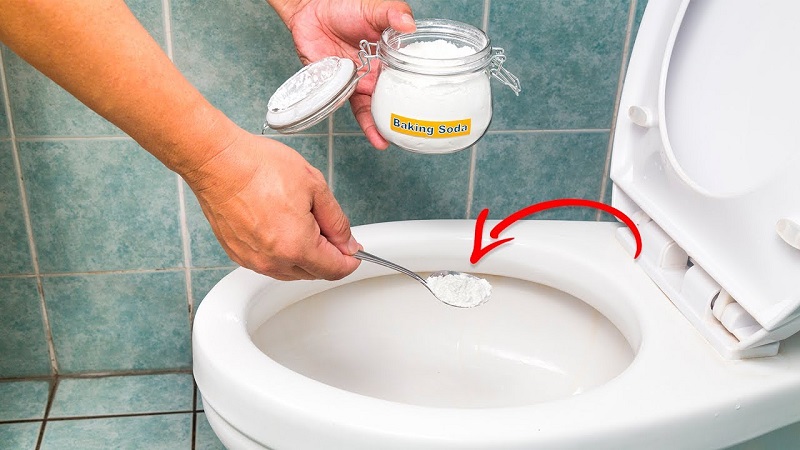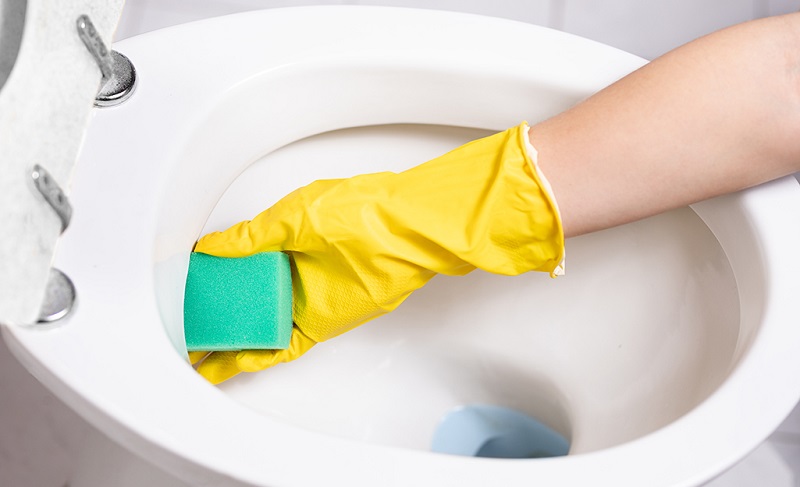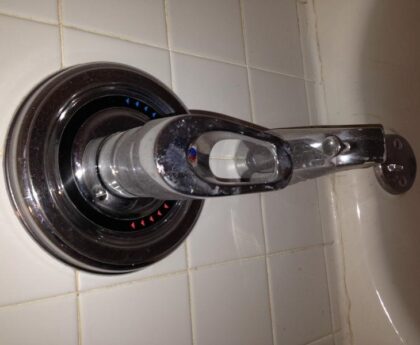We’ve all been there – the dreaded clogged toilet that refuses to flush. It’s a situation that can lead to frustration, embarrassment, and even panic. Whether it’s at home or in a public restroom, dealing with a stubborn clog can feel like a daunting task. But fear not! In this article, we’re going to explore a range of inventive methods to unclog a toilet when nothing else seems to work. From household items to clever tricks, you’ll discover effective solutions to tackle this common household dilemma.
Explaining the Importance of Finding a Solution
Before we delve into the methods, let’s talk about why finding a solution to a clogged toilet is essential. A clog can disrupt your daily routine and cause inconvenience to you and others sharing the same bathroom. Moreover, leaving a clog untreated can lead to potential plumbing issues and further complications down the line. So, it’s in your best interest to address the problem as soon as possible.
Overview of Different Methods to Unclog a Toilet Without a Plunger
Method 1: Baking Soda and Hot Water
Dissolving Baking Soda in Hot Water
One effective way to tackle a clog is by using a mixture of baking soda and hot water. Start by pouring about one cup of baking soda into a bowl.
Pouring the Mixture into the Toilet
Gently add the baking soda to the toilet bowl. Ensure that it spreads evenly around the drain.
Waiting for a Few Minutes
Allow the baking soda to sit for a few minutes. During this time, it will start to break down the clog.
Flushing the Toilet to Check if the Clog Is Cleared
After waiting, flush the toilet to see if the clog has been successfully cleared. If not, you can try other methods.
Method 2: Vinegar and Baking Soda
Mixing Vinegar and Baking Soda
Combine vinegar and baking soda in a bowl. The chemical reaction between these two ingredients can help break down the clog.
Pouring the Mixture into the Toilet
Carefully pour the vinegar and baking soda mixture into the toilet bowl.
Allowing the Chemical Reaction to Dissolve the Clog
Leave the mixture to react for a while. You’ll hear fizzing sounds as the reaction takes place.
Flushing the Toilet to Check if the Clog Is Cleared
Flush the toilet to determine if the clog has loosened. If necessary, you can repeat the process or move on to another method.
Method 3: Wire Hanger
Straightening a Wire Hanger
Grab a wire hanger and straighten it as much as possible. This makeshift tool can help dislodge stubborn clogs.
Inserting the Hanger into the Toilet Drain
Gently insert the straightened hanger into the toilet drain. Use a back-and-forth motion to break up and dislodge the clog.
Being Cautious Not to Scratch the Porcelain
While using the wire hanger, be careful not to scratch the porcelain of the toilet bowl.
Flushing the Toilet to Check if the Clog Is Cleared
Flush the toilet to see if the clog has been successfully cleared by your efforts. If not, there are more methods to try.
Method 4: Hot Water and Dish Soap
Pouring a Generous Amount of Dish Soap into the Toilet
Squirt a generous amount of dish soap into the toilet bowl. This soap can help break down the clog.
Running Hot Water from the Sink or Bath
Turn on the hot water tap and let it run for a few minutes. Hot water helps to soften and dissolve the clog.
Filling a Bucket or Pot with Hot Water
While the tap is running, fill a bucket or pot with hot water. You’ll need this for the next step.
Pouring the Hot Water into the Toilet
Carefully pour the hot water into the toilet bowl from a height. The force of the water can help dislodge the clog.
Allowing the Hot Water and Soap to Break Down the Clog
Let the hot water and soap mixture sit for a while. The soap will work on breaking down the clog.
Flushing the Toilet to Check if the Clog Is Cleared
Flush the toilet to see if the clog has been cleared. If not, there are more methods at your disposal.
Method 5: 2-Liter Soda Bottle
Filling a 2-Liter Soda Bottle with Hot Water
Fill a 2-liter soda bottle with hot water. This will be the tool to dislodge the clog.
Wearing Rubber Gloves
Put on rubber gloves to protect your hands during this method.
Placing the Thumb over the Bottle Opening
Place your thumb firmly over the opening of the soda bottle. This will create pressure when you squeeze the bottle.
Inserting the Bottle into the Toilet Bowl
Insert the bottle into the toilet bowl, making sure the opening is positioned over the clog.
Squeezing the Bottle to Shoot Out the Hot Water
Squeeze the bottle to release the hot water with force. This pressure can help dislodge the clog.
Repeating the Process to Dislodge the Clog
If necessary, repeat the process a few times until you feel the clog has been successfully dislodged.
Flushing the Toilet to Check if the Clog Is Cleared
Flush the toilet to determine if the clog has been removed. If not, there are still more methods to explore.
Method 6: Toilet Auger
Using a Toilet Auger or Plumbing Snake
A toilet auger, also known as a plumbing snake, is a specialized tool designed for unclogging toilets.
Feeding the End of the Cable into the Toilet
Insert the end of the auger’s cable into the toilet drain. Push it gently until you feel resistance.
Cranking the Handle Clockwise and Pushing the Auger
Crank the handle of the auger clockwise while applying gentle pressure. This action helps the auger navigate through the clog.
Snagging or Breaking Up the Obstruction
The auger will either snag the clog or break it up into smaller pieces, making it easier to flush.
Pulling Out the Auger if the Obstruction Is Snagged
If the auger snags the clog, carefully pull it out while maintaining pressure on the handle.
Flushing the Toilet to Check if the Clog Is Cleared
Flush the toilet to determine if the clog has been effectively cleared using the toilet auger.
Method 7: Chemical Drain Opener
Using a Commercial Drain Opener According to Instructions
Purchase a commercial drain opener from your local store and follow the manufacturer’s instructions.
Pouring the Product into the Toilet
Carefully pour the recommended amount of the drain opener into the toilet bowl.
Allowing the Solution to Break Down the Clog Over Time
Leave the solution to work its magic for the specified time indicated on the product packaging.
Flushing the Toilet to Check if the Clog Is Cleared
After the designated time has passed, flush the toilet to see if the clog has been cleared.
Method 8: Enzyme Waste Removal
Using Commercial Products for Enzyme Waste Removal
Enzyme-based products are designed to break down organic matter, making them effective for unclogging toilets.
Pouring the Product into the Toilet According to Instructions
Follow the instructions on the product label and pour the recommended amount into the toilet bowl.
Allowing the Enzymes to Liquify Solid Waste
The enzymes in the product will start to liquify solid waste and break down the clog.
Flushing the Toilet to Check if the Clog Is Cleared
Flush the toilet after the designated time to determine if the enzymes have successfully cleared the clog.
Method 9: Plumber’s Help
Knowing When to Call a Professional Plumber
If all else fails and the clog remains stubborn, it’s time to consider seeking professional assistance.
Explaining the Benefits of Seeking Professional Assistance
Professional plumbers have the expertise and specialized tools to handle even the most challenging clogs.
Contacting a Plumber for Stubborn or Recurring Clogs
If you’re facing a particularly stubborn or recurring clog, don’t hesitate to reach out to a plumber for expert help.
Conclusion
In this article, we’ve explored an array of creative methods to tackle the frustrating issue of a clogged toilet. We encourage you to try these methods step by step, keeping in mind that some may work better than others depending on the nature of the clog.
Always exercise caution when attempting any of these methods, and make safety a priority throughout the process. The relief of successfully unclogging a toilet is unparalleled. With determination, creativity, and a bit of elbow grease, you’ll be able to restore normalcy to your bathroom routine.
FAQs
Q1: Can I use a plunger as a last resort?
Absolutely! A plunger is a commonly used tool for unclogging toilets. If the methods mentioned in the article don’t work, a plunger might do the trick.
Q2: Is it safe to mix vinegar and baking soda?
Yes, it’s safe to mix vinegar and baking soda, as they create a chemical reaction that can help break down clogs. However, exercise caution and avoid splashing.
Q3: Are these methods environmentally friendly?
Most of the methods mentioned in the article use common household items and are relatively eco-friendly compared to chemical drain cleaners.
Q4: When should I call a professional plumber?
If you’ve tried multiple methods and the clog persists, or if you’re dealing with recurrent clogs, it’s best to seek the expertise of a professional plumber.
Q5: How can I prevent future clogs?
Prevent future clogs by avoiding flushing large amounts of toilet paper or non-flushable items. Regular maintenance and using a drain screen can also help prevent clogs.







